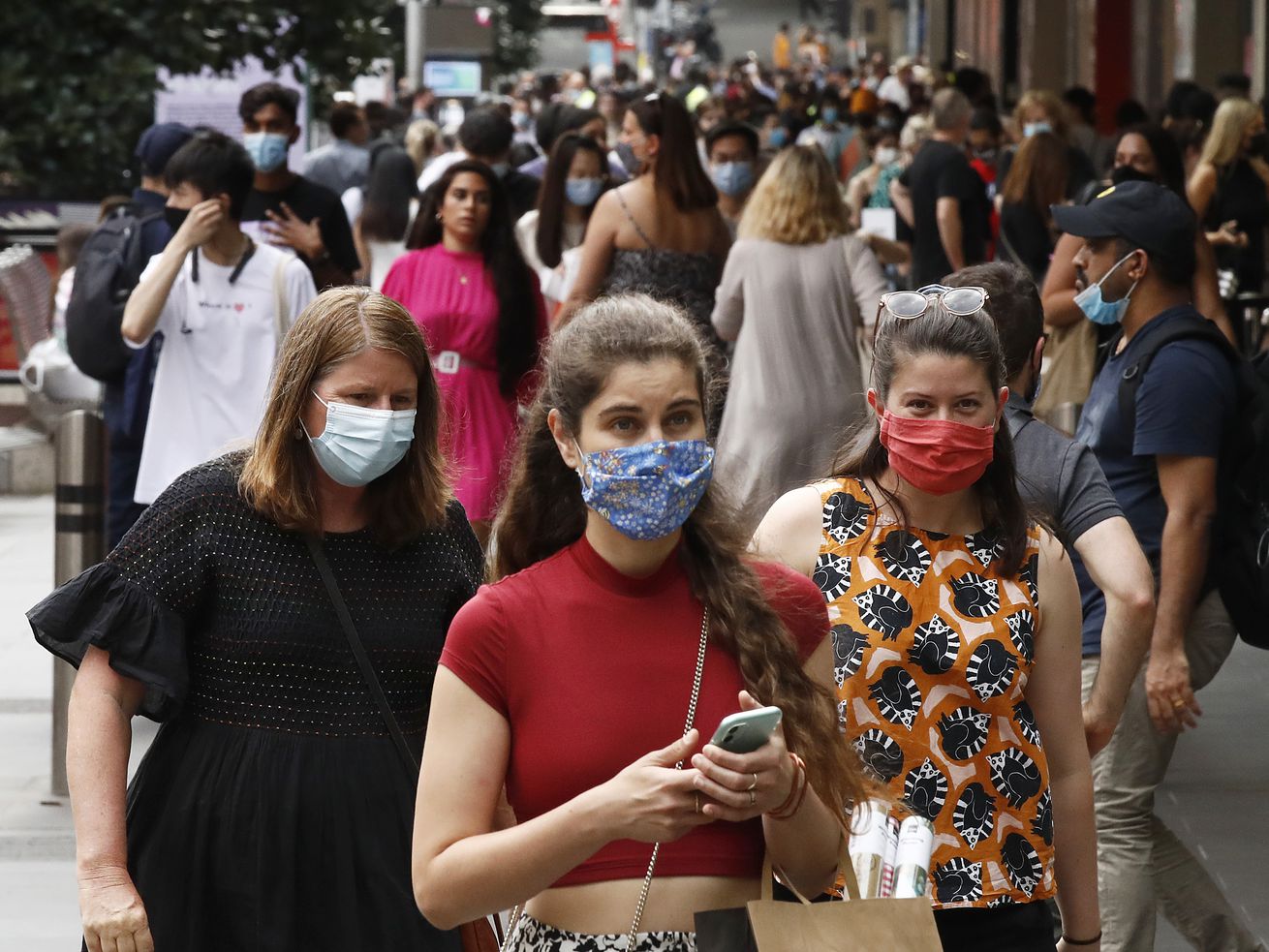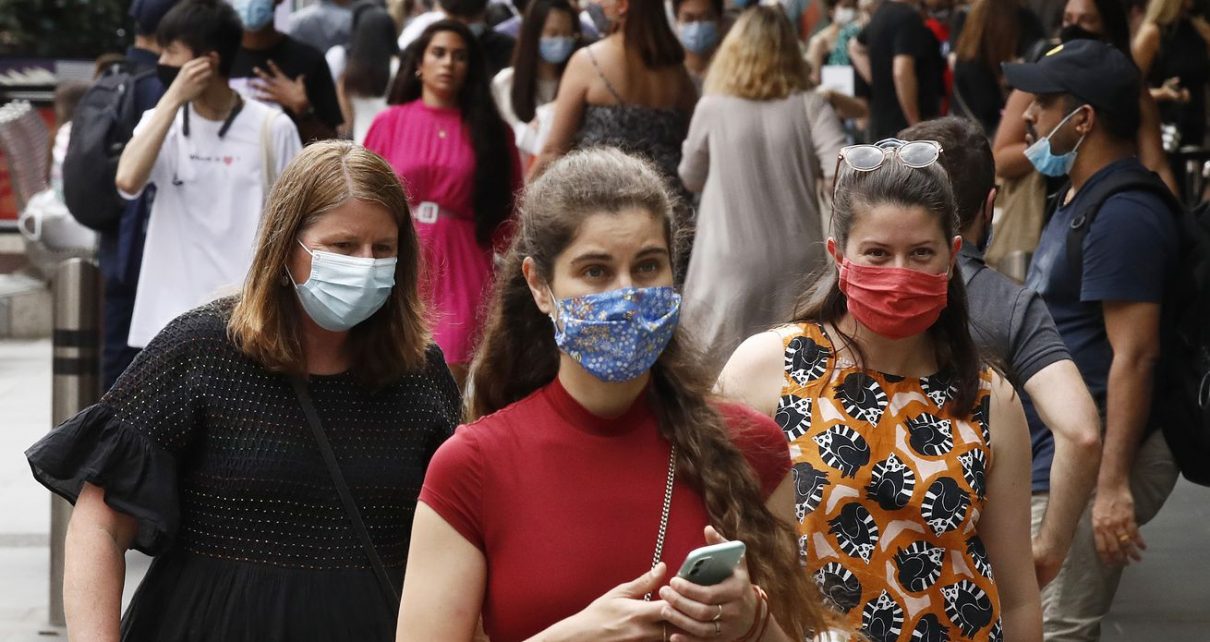
Life is almost back to normal in Melbourne, Australia. Here’s how they did it.
In July and August, the Australian state of Victoria was going through a second Covid-19 wave. Local leaders set an improbable goal in the face of that challenge. They didn’t want to just get their Covid-19 numbers down. They wanted to eliminate the virus entirely.
By the end of November, they’d done it.
They have seen no active cases for a full four weeks. Melbourne, the state’s capital and a city with about as many people as the greater Washington, DC, area, is now completely coronavirus-free.
Australia enjoyed plenty of advantages over the United States in containing Covid-19. It has no land borders to speak of. Its population density is very low (though the population is concentrated on the coasts). Its outbreak never got nearly as bad as the US’s did. On its worst days, Victoria saw about 700 new cases; Missouri, with (very roughly) a similar population and landmass, is currently averaging more than 3,000. Some of the Australian states also closed their borders to the others, which lowered the risk somebody might bring Covid-19 from one part of the country to another.
But the Australian epidemic has also mirrored America’s in important ways. Once the coronavirus arrived in the spring, the country went into lockdown. When cases abated, some of those restrictions were eased — and, before too long, Covid-19 cases were spiking again. Each state was responsible for its own response, with the federal government playing an advisory role outside of obviously national issues like foreign travel.
In the second wave, Victoria was by far the hardest-hit state. Its case numbers were dwarfing those in every other state including New South Wales, home to the country’s other great metropolis, Sydney.
/cdn.vox-cdn.com/uploads/chorus_asset/file/22144711/Screen_Shot_2020_12_04_at_10.54.15_AM.png) Grattan Institute
Grattan Institute Policymakers dreaded an endless cycle of lockdown-reopening-lockdown — exactly the situation the US finds itself in. They realized that amorphous goals of “slowing the spread” or “flattening the curve” had been ineffective in mustering public support for the stringent mitigation measures that would be necessary to contain the virus.
So they went big. The state’s roadmap largely followed a policy proposal laid out in September by the Grattan Institute (a nonprofit think tank supported by the state and federal governments): “Go for zero.”
The goal was not just to slow Covid-19 down. It was to eradicate the virus. The state had gone into a stage 4 lockdown — most businesses closed, there was a nightly curfew, and residents were ordered to stay within five kilometers of their home — in August, and it was then extended in September, with the explicit goal of eventually reaching zero new cases.
“Ideally, lockdowns are only done once and done well,” the proposal’s authors, Stephen Duckett and Will Mackey, explained. “The benefit of zero is to reduce the risk of ‘yo-yoing’ between virus flare-ups and further lockdowns to contain them.”
They treated the threats to public health and the economy as intertwined, which most experts agree they are. The Australian states that contained Covid-19 best also saw the strongest economic recoveries. Victoria, with the worst outbreak among the states, was lagging behind in consumer spending and business revenue.
People will stay home and spend less if they are worried about the virus. The Grattan authors cited a study comparing Denmark (which established a lockdown) and Sweden (which took a more relaxed “herd immunity” strategy) and found that their economies suffered about the same in the early months of the pandemic. But later in the year, when Denmark had its outbreak under control but Sweden did not, unemployment claims were almost back to pre-Covid levels in the former but remained elevated in the latter.
“Without elimination, the third, fourth, or fifth wave is an inevitability. This will either involve more lockdowns or the government will lose the social license to do lockdowns and the virus will spread indiscriminately,” Duckett told me over email, perhaps unwittingly describing the very challenge before the United States during this winter surge. “A hard lockdown in the early stages of the virus gives a chance for elimination, and that gives the chance for business certainty and a full recovery.”
Melburnians are now enjoying the benefits of their sacrifices. Duckett said he had just gone to lunch with a few friends before responding to my email.
The US probably cannot achieve zero Covid-19 cases anytime soon. But it could embrace the spirit of the Victorian model: a clear goal, support for the proven mitigation strategies, and a commitment from the public.
“Having a clear, uniform goal — that everyone could work toward — was critical to Victoria’s success,” Jennifer Kates, director of global health policy at the Kaiser Family Foundation, told me. “But they didn’t just have a goal. They established the underlying components that were needed and provided strong social support.”
“All of this,” she continued, “has been mostly absent in America.”
There is no secret sauce to Covid-19 containment. It just takes commitment.
There was nothing particularly novel about Victoria’s containment strategy. They just dedicated themselves to what works.
They expanded testing, including random pooled testing and testing for workers in essential industries and of people attending schools or other indoor events. They achieved 24-hour turnarounds for test results, so if a person tested positive, they could quickly isolate. Once cases reached zero, the state was planning to start testing sewage for Covid-19 to get a head start on any resurgence.
The Grattan Institute also recommended ramping up contact tracing, another established part of an effective Covid-19 response, and mandatory isolation. Australia had problems earlier in the year with international travelers breaking their quarantines and introducing the virus into the community. The experts advised having people scan QR codes if they entered any public venues, so they could be contacted if a related case was detected. They also noted that other Australian states had police do spot checks of people who were supposed to be in isolation.
“A system that relies on self-isolation in which people are unable or refuse to self-isolate cannot succeed,” Duckett and Mackey wrote.
That probably sounds draconian to Americans. Certainly, the harshest lockdown measures taken in Victoria — requiring people to stay within a few miles of their house and stay inside completely at night — would be politically challenging in the US.
But Australians took it in stride because they knew the goal they were working toward.
“I think being obedient is definitely part of the Australian psyche,” Eloise Shepherd, who lives in the Melbourne suburbs (and whom I met for our feature on Australian health care published earlier this year), told me over text. “It was really hard, but I’m so grateful we did it.”
The government there made it easier for businesses and workers by providing subsidies to businesses to keep people employed and by increasing their unemployment benefits — the same policies that the US has let lapse and is now struggling to reinstitute even during this devastating winter wave.
As cases dwindled, the lockdown measures were relaxed in a clear, tiered fashion. The extreme travel restrictions were the first to go. Schools and businesses could reopen with spacing. Masks continued to be required indoors and on public transportation. Eventually, all restrictions except for international quarantine could be lifted.
Things could still go wrong for Victoria and the rest of Australia. The state has started prioritizing having “normal” conditions for the Christmas shopping season over maintaining zero new cases. But it is easier to focus on reopening when community spread is eliminated — rather than pushing forward with reopening in spite of sustained spread, as the US has done.
“We know that we’re going to basically have a much easier life now that the pandemic is under control,” Duckett said. “We still celebrate the fact that we’ve had so many days with no new infections and no deaths. The community is very proud of itself.”
Victoria’s Covid-19 restrictions were controversial with some residents, but Australia in general enjoys more political homogeny than the US does. That must make it easier to build solidarity for these extraordinary measures. America is deeply polarized, and that has been reflected in our scattered policy responses and in the differing attitudes of Democrats and Republicans toward mask-wearing and other restrictions.
But I don’t believe it was impossible for America to execute a similar strategy to the one that has succeeded in Victoria. Polls showed most Americans did support wearing masks and other mitigation measures, even if there was some divide among partisans. They worried that social distancing would be relaxed too quickly, not too slowly, much like the Australians did.
The problem, or one of them, is that the US just never set a clear goal for Covid-19 suppression. It was understandably hard to ask people in Wisconsin to abide by social distancing restrictions back when they thought the coronavirus was just a New York City problem — and when they didn’t know what the plan was.
Today, of course, the pandemic is a very real problem for every American. So as we try to bring the winter wave under control, we might benefit from taking a lesson from the Aussies and coming up with a specific objective that all of us, together, can work toward.





